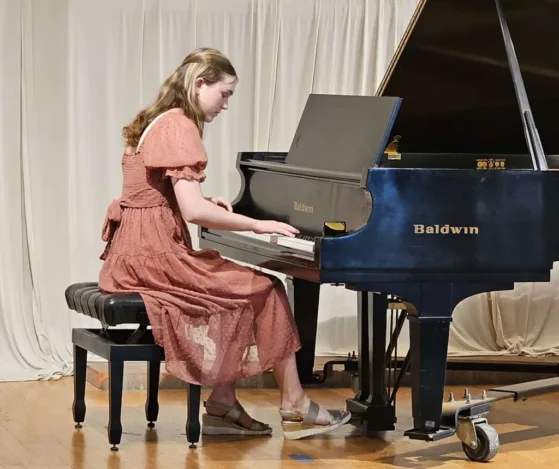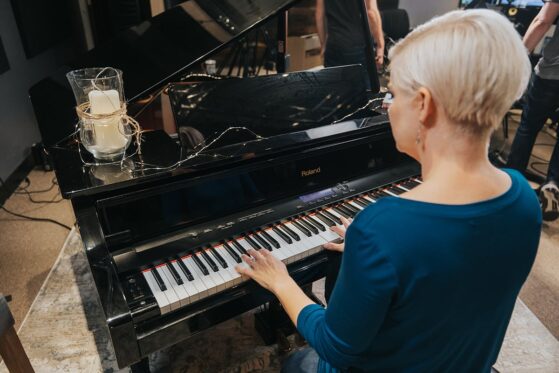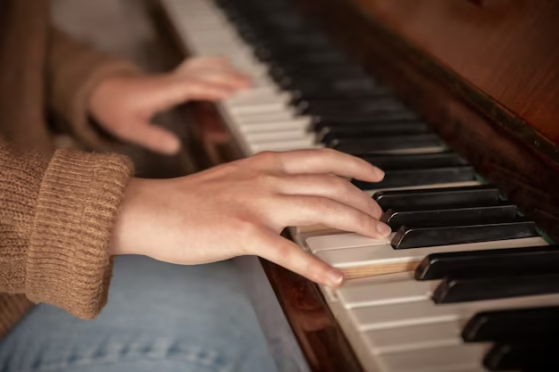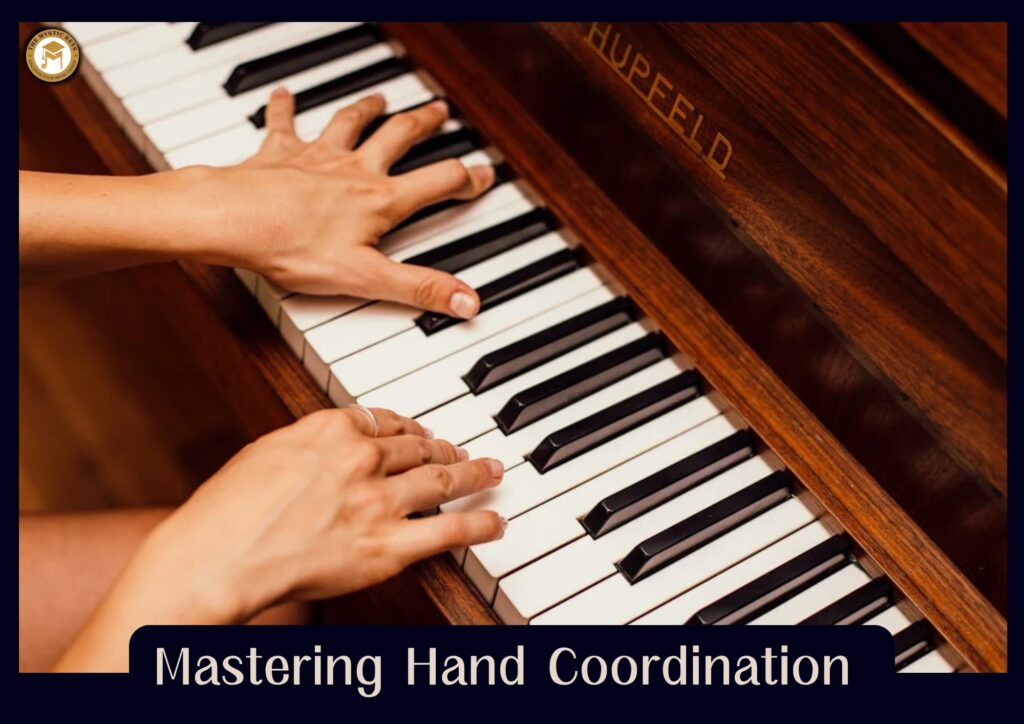Mastering Hand Coordination | Play Complex Pieces Effortlessly
Hand coordination is a crucial skill for any musician, especially when playing complex pieces. Whether you’re a pianist, guitarist, or any other instrumentalist, mastering hand coordination is essential for playing intricate music with precision, fluidity, and expressiveness. However, for many musicians, particularly those tackling advanced compositions, achieving seamless coordination between both hands can seem like an insurmountable challenge. But with the right approach, anyone can develop the hand coordination necessary to play even the most demanding music effortlessly.
In this comprehensive guide, we will explore how to improve your hand coordination, develop greater dexterity, and learn to play complex pieces with ease. Let’s break it down step by step, focusing on techniques, practice routines, and tips to achieve fluidity in your playing.

Understanding Hand Coordination | Why Is It Important?
Hand coordination is the ability to control and synchronize both hands while playing an instrument. It involves the following key aspects:
-
Independence: The hands should be able to perform different tasks simultaneously, like playing different rhythms or notes.
-
Precision: Each hand should hit the correct note with the right amount of pressure and timing.
-
Fluidity: The movement between notes and phrases should be smooth, without any awkward pauses or jerks.
-
Balance: Both hands must be in harmony, neither overshadowing the other.
In complex pieces, the left hand may have the bass or harmonic structure while the right hand is responsible for melody or intricate passages. To perform these parts together seamlessly, each hand needs to have a distinct function and perform it with control. When the left and right hands are well-coordinated, they can complement each other, creating the musical texture and depth that make complex pieces shine.

Developing Hand Independence
The first step in mastering hand coordination is developing the independence of each hand. Here are some techniques to help you achieve this:
Separate Practice: Start by practicing each hand separately. Focus on the specific parts of the piece that challenge you. For example, if the left hand is playing the accompaniment and the right hand is playing the melody, practice each hand’s part without the other. This allows you to give your full attention to the movements, nuances, and challenges of each hand individually.
Slow Practice: When working on more challenging sections, slow down the tempo to focus on the accuracy of each hand. Playing slowly will give you the time to build muscle memory and make adjustments. As you master the parts individually, gradually increase the tempo.
Use Different Rhythms: Practice playing each hand with different rhythmic patterns. For instance, if one hand is playing eighth notes, try making the other hand play dotted rhythms, triplets, or syncopated rhythms. This technique builds coordination and challenges both hands to function in more complex ways.
Mirror Exercises: For both hands to develop equal independence, try playing the same pattern with both hands at the same time, but in opposite directions. For instance, if you’re playing a scale, play it ascending with one hand and descending with the other. This forces your brain and body to find a balance between the hands, improving their ability to work independently.

Breaking Down Complex Passages
Complex pieces can often feel overwhelming because of the number of elements at play. Breaking down the music into smaller, manageable parts will help reduce the stress and complexity. Here’s how to approach this:
-
Identify Challenging Sections: Start by identifying the sections in the music where the hand coordination is most difficult. Isolate these sections and focus your practice on them.
-
Segment Practice: Break down the complicated sections into smaller segments, such as two or four measures at a time. Practice each segment slowly and with both hands separately, then gradually put them together.
-
Layering: Once each hand’s part is mastered in isolation, start layering the parts together. Begin with short sections where both hands can function more simply. As you build confidence, increase the complexity of the sections until you can play through the entire passage smoothly.
-
Isolate Difficult Movements: Sometimes, certain movements—whether a rapid scale, arpeggio, or tricky fingerings—are the root of hand coordination challenges. Isolate these movements and repeat them until they feel natural. Slow them down if necessary and focus on making the transitions as smooth as possible.

Strengthening Finger Dexterity and Flexibility
Hand coordination is not just about synchronizing movement, but also about ensuring each finger can move independently and with precision. The more flexible and dexterous your fingers are, the easier it will be to perform complex passages. To improve finger strength and agility, try the following:
Finger Independence Exercises: Practice finger exercises like the Hanon piano exercises or similar drills for your instrument. These are designed to improve individual finger strength and independence, which will directly benefit hand coordination.
Stretching and Warm-ups: Before tackling difficult pieces, take the time to warm up your fingers, wrists, and hands. Stretching exercises, like the “spider exercise” or “five-finger scale,” will help prepare your muscles and joints for the demands of complex music. This will increase flexibility and reduce the risk of injury.
Daily Finger Workouts: Dedicate a portion of your practice session to working on finger independence and dexterity. Play scales, arpeggios, and other technical exercises slowly and precisely, ensuring that each finger is relaxed and moving freely.
Even Finger Distribution: Focus on equal strength across all fingers. Often, we rely more on the stronger fingers (like the thumb or middle fingers), which can cause imbalance. Make sure all fingers are active and playing with equal force to create better coordination between them.

Synchronizing Both Hands
Once both hands are comfortable with their individual parts, the next step is to synchronize them. Here are some methods to help you achieve perfect synchronization:
Practice Hands Together Slowly: Start by playing the music at a slower tempo, with both hands working together. It’s important not to rush through the piece. Playing slowly ensures that both hands move together in perfect timing, which will allow you to internalize the movements and make them automatic over time.
Use a Metronome: A metronome is an invaluable tool when it comes to hand coordination. Start at a slow pace and gradually increase the speed as you become more comfortable. The metronome will help you keep a steady rhythm, preventing one hand from rushing ahead or lagging behind.
Mental Practice: Visualize both hands moving together while away from the instrument. This mental rehearsal allows your brain to process the movements and patterns, making it easier to execute them physically when you return to the instrument.
Practice with Dynamics: Don’t just focus on playing the notes correctly; also work on playing with the appropriate dynamics. This adds another layer of complexity to your hand coordination, requiring you to adjust the pressure and speed of each hand while still maintaining synchronization.

Building Musicality Through Coordination
Hand coordination is not just about playing notes accurately; it’s also about playing with expression and musicality. As you become more comfortable with complex pieces, focus on making your playing more musical and less mechanical. Here’s how:
-
Expressive Phrasing: As you gain control over your hand movements, start shaping the phrases with subtle nuances. Add crescendos, decrescendos, and other dynamic variations to your playing. This adds an extra layer of musicality and depth to your coordination.
-
Pedal Control (For Pianists): If you’re playing the piano, perfecting your pedal usage is crucial for adding richness to the sound. Make sure your pedal timing is in sync with your hands, and practice lifting and applying the pedal at the right moments for smooth, connected playing.
-
Articulation and Touch: Work on refining the touch of each hand, making sure each note is articulated with clarity and intention. Playing each note with care will improve the overall quality of the piece, making it sound effortless and natural.

Consistency Is Key
Mastering hand coordination is a gradual process that requires patience and consistent practice. Even if you only have a short amount of time each day, it’s important to practice regularly. Break down complex pieces into smaller, manageable sections, focusing on each part until it becomes comfortable. Slowly start combining these sections, building up to the entire piece. Over time, as your hands become more synchronized, movements that once seemed challenging will feel effortless. The key is steady, intentional practice that allows your hands to naturally work together, improving both your technique and overall musicality.

Conclusion
Mastering hand coordination is a gradual process that requires consistent practice, patience, and dedication. By focusing on hand independence, breaking down complex pieces, improving finger dexterity, and synchronizing both hands, you can achieve a level of playing that is fluid, precise, and effortless. The goal is not just technical mastery but also expressing music in a way that feels natural and engaging. Keep practicing, and over time, you’ll be able to tackle even the most intricate pieces with ease and confidence.
Join The Mystic Keys and take your musical journey to the next level with expert guidance, structured lessons, and personalized training. Unlock your full potential and master hand coordination with us!
Related Blogs
The Science of Sight-Reading: How to Read Piano Music Faster
Sight-reading is one of the most essential skills for any pianist. It allows you to play new music on the spot without having to memorize it first. But for many learners, it’s a challenging task that feels slow and frustrating.
How to Develop Finger Independence for Smooth Piano Playing
Developing finger independence is a cornerstone of proficient piano playing. It enables pianists to execute complex passages with precision, expressiveness, and fluidity.
Mastering Piano – Finger Placement Basics from The Mystic Keys
At The Mystic Keys, we emphasize the importance of proper finger placement as the foundation for any pianist’s journey. Whether you’re just starting or refining your technique, mastering finger placement will not only improve your speed and precision but also prevent strain and fatigue.








